The Philippine Constabulary played a pivotal role in shaping the law enforcement landscape of the Philippines. Established on August 8, 1901, under American occupation, it replaced the Spanish Guardia Civil and became the country’s first organized police force. Its mission was clear: to enforce law and order during a time of transition and uncertainty.
Over the years, the organization evolved from a military police force into a modern institution. It adapted to the changing needs of the nation, ensuring security and stability. The Philippine Constabulary’s influence extended beyond its historical roots, laying the foundation for today’s national police system.
This guide explores the history, development, and lasting impact of the Philippine Constabulary. From its formation to its role in maintaining peace, it remains a cornerstone of the country’s law enforcement legacy.
Key Takeaways
- The Philippine Constabulary was established on August 8, 1901, under American rule.
- It replaced the Spanish Guardia Civil to enforce law and order.
- The organization evolved from a military police force to a modern institution.
- It laid the foundation for the current national police system in the Philippines.
- The Constabulary played a key role in maintaining peace and security nationwide.
Overview of the Philippine Constabulary
Founded in 1901, the Philippine Constabulary emerged as a cornerstone of law enforcement in the Philippines. Established under American supervision, it replaced the Spanish Guardia Civil and became the country’s first organized police force. Its mission was to maintain peace and order during a period of transition.
The early structure of the Constabulary reflected its military roots. It was designed to operate as a gendarmerie, blending military discipline with police duties. This unique approach allowed it to address both crime and insurgency effectively.
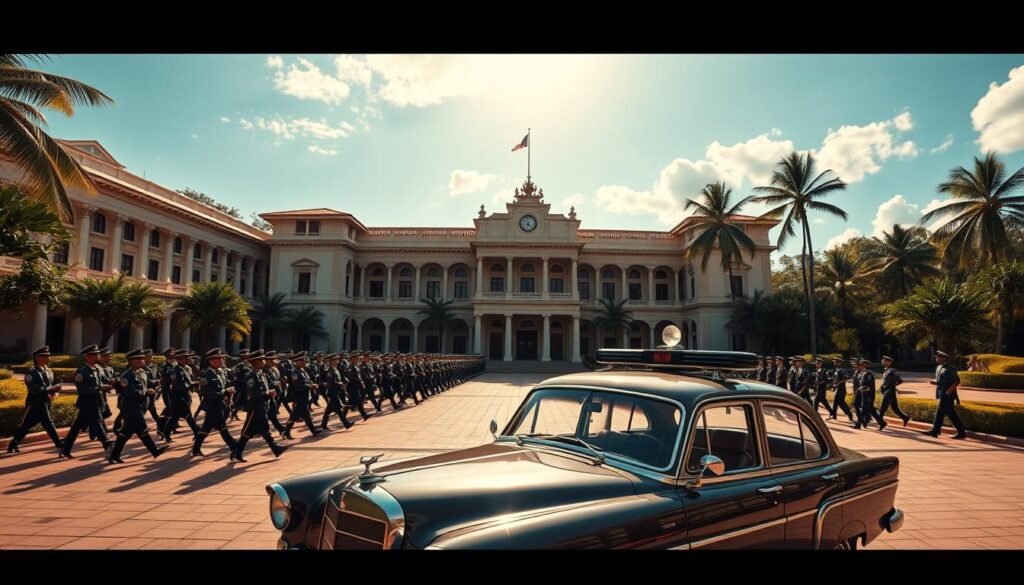
Over time, the organization evolved from a military body into a modern police institution. Its responsibilities expanded to include counter-insurgency, riot control, and intelligence gathering. These functions were critical in maintaining security across the nation.
The Philippine Constabulary played a pivotal role in shaping the national police system. Its integration with broader government frameworks ensured a unified approach to law enforcement. This legacy continues to influence the country’s police services today.
From its creation to its evolution, the Constabulary remains a symbol of dedication to law and order. Its contributions to the history of the Philippines highlight its importance as a foundational institution in the nation’s development.
Historical Background and Establishment
In the early 1900s, the Philippines witnessed the birth of a new law enforcement institution. The Philippine Constabulary was established on August 8, 1901, under American rule. This marked a significant shift from the Spanish Guardia Civil to a more organized police force.
The creation of the Constabulary was formalized through Act No. 175 by the Second Philippine Commission. This act aimed to address the growing need for security and order in a country undergoing rapid change. The new force was tasked with maintaining peace and combating crime across the archipelago.
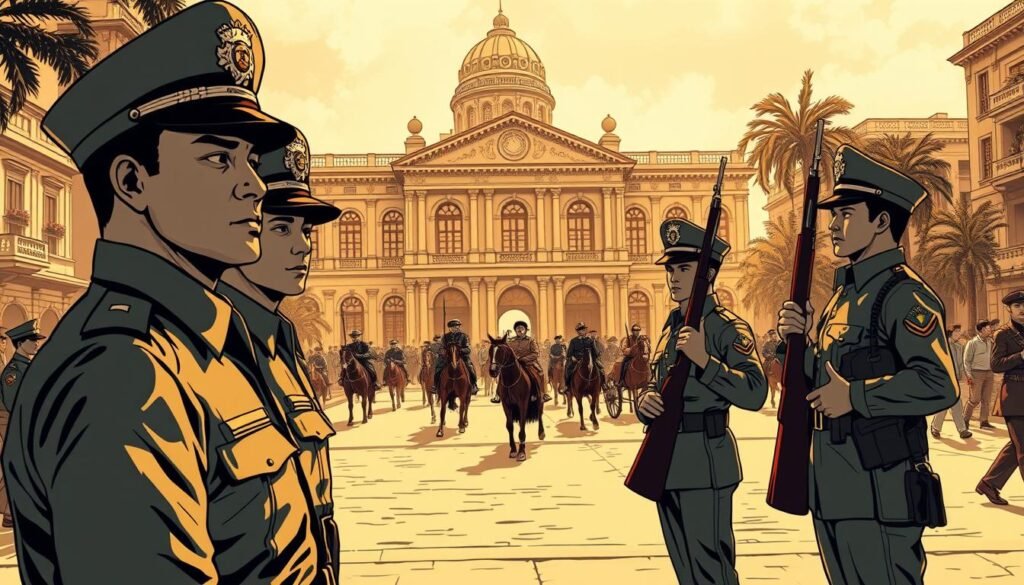
Recruitment began immediately, with the initial force comprising around 6,000 personnel. These early recruits were trained to handle both military and police duties, reflecting the organization’s dual role. This approach laid the groundwork for a modern institution that would evolve over time.
“The establishment of the Philippine Constabulary was a turning point in the history of Philippine law enforcement, setting the stage for future developments.”
The transition from Spanish to American-led law enforcement was not without challenges. However, the Constabulary’s early efforts were instrumental in shaping the national police system. Its legacy continues to influence the government’s approach to security and order today.
This era was crucial in defining the role of police in the Philippines. The Philippine Constabulary not only addressed immediate crime but also laid the foundation for a more structured and effective law enforcement system.
Formation and Early Mission
Under American occupation, the foundations of a structured law enforcement system in the Philippines were laid. The Philippine Constabulary was established to address the growing need for security and order during a time of transition. Its creation marked a significant shift from colonial-era systems to a more organized police force.
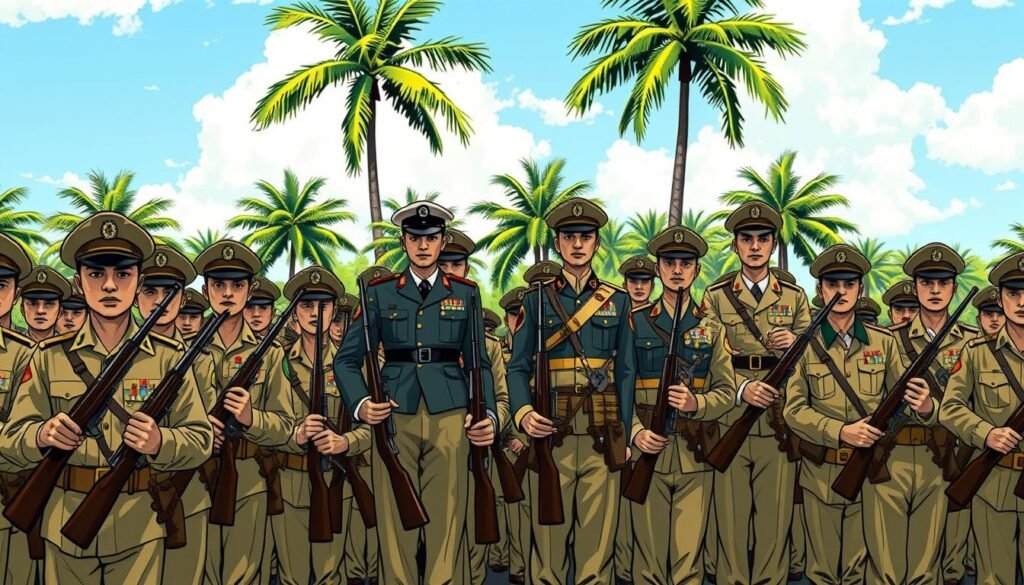
Creation under American Occupation
American occupational authorities played a pivotal role in shaping the Philippine Constabulary. Captain Henry T. Allen, a U.S. Army officer, was appointed as its first chief. His leadership was instrumental in defining the organization’s structure and mission. The Constabulary was designed to operate as a hybrid military and police force, blending discipline with law enforcement duties.
The official mandate of the Constabulary was clear: to maintain peace, combat crime, and suppress insurgency. This dual role allowed it to address both internal and external threats effectively. The influence of American officers ensured that the organization adhered to modern police practices, setting a precedent for future developments.
Initial Recruitment and Objectives
The recruitment process focused on building a capable and diverse force. Filipino officers like Jose Velasquez and Felix Llorente were among the first to join the ranks. Their inclusion was a strategic move to foster trust and collaboration within the local population. These officers were trained to handle both military and police responsibilities, reflecting the organization’s unique mission.
The early objectives of the Constabulary included establishing law and order across the archipelago. Its efforts were critical in stabilizing the country during a period of uncertainty. By integrating Filipino personnel, the organization laid the groundwork for a more inclusive and effective institution.
“The formation of the Philippine Constabulary under American guidance was a turning point in the history of Philippine law enforcement, setting the stage for future reforms.”
The early mission of the Constabulary not only addressed immediate challenges but also shaped the future of national police services. Its legacy continues to influence the government’s approach to security and order in the Philippines.
The Evolution of the Constabulary’s Role
Over the decades, the role of the Philippine Constabulary shifted dramatically, adapting to the nation’s evolving needs. From its early days as a militia-type force, it transformed into a modernized unit integrated with national security and counterinsurgency measures.
Initially, the Constabulary focused on maintaining law and order in a post-colonial society. Its responsibilities expanded as the country faced new challenges, including insurgencies and political unrest. This evolution was driven by both internal and external factors, such as changes in government policies and societal demands.
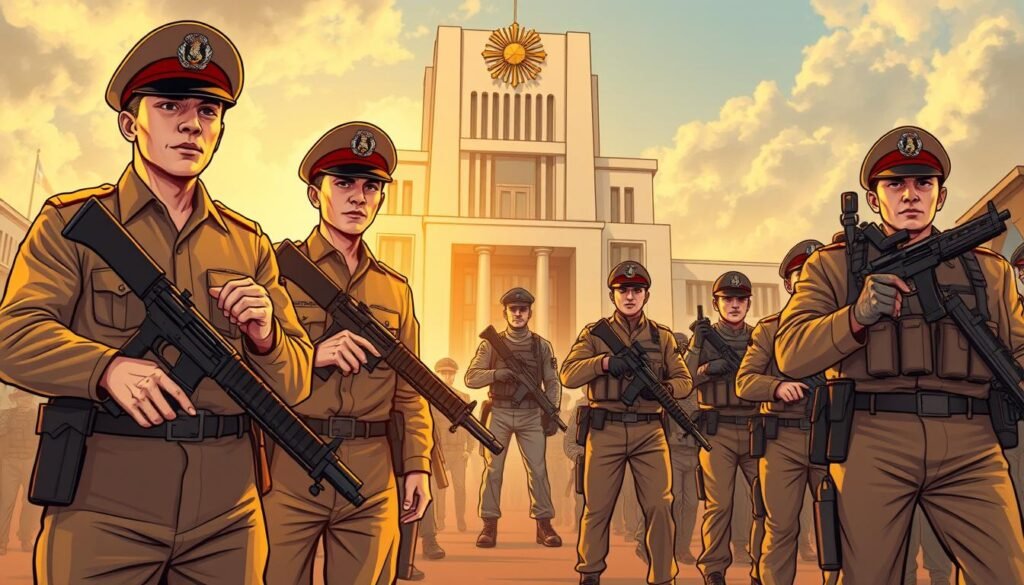
One of the most significant changes was its integration into broader security frameworks. By the mid-20th century, the Constabulary played a key role in counterinsurgency operations, working alongside the military to address threats to national stability. This shift marked a departure from its traditional police duties.
Political changes also influenced its evolution. For example, the declaration of martial law in 1972 expanded its authority, giving it greater control over law enforcement and internal security. This period highlighted the organization’s adaptability in responding to the nation’s needs.
Key milestones in its development include its transformation into the Philippine National Police in 1990. This reorganization reflected a broader trend toward professionalizing law enforcement and ensuring accountability. The Constabulary’s legacy continues to shape the country’s approach to security and order.
| Year | Milestone | Impact |
|---|---|---|
| 1901 | Establishment of the Constabulary | First organized police force in the Philippines |
| 1972 | Martial Law Declaration | Expanded authority in law enforcement and security |
| 1990 | Reorganization into the Philippine National Police | Modernization and professionalization of police services |
The evolution of the Constabulary’s role underscores its importance in the history of the Philippines. From its early days to its modern incarnation, it has remained a cornerstone of the nation’s security and law enforcement systems.
Reorganization as a Military Organization
During the 1930s, significant changes reshaped the structure of law enforcement in the Philippines. The National Defense Act of 1935 played a pivotal role in this transformation. It aimed to modernize the country’s security framework by integrating military and police functions.
Transition under the National Defense Act
The National Defense Act provided the legal foundation for reorganizing the Philippine Constabulary. It shifted the organization from a civilian-focused police force to a military-oriented structure. This change was driven by the need to address both internal crime and external threats more effectively.
Executive Order No. 11 in 1936 further solidified this transition. It reconstituted the Constabulary under the Department of National Defense. This move emphasized its dual role in maintaining law and order while supporting national security efforts.
Integration with the Philippine Army
The reorganization also led to the integration of the Constabulary with the Philippine Army. This merger aimed to streamline resources and enhance operational efficiency. By combining military and police functions, the government sought to create a more unified approach to national security.
However, this integration posed challenges. Balancing the distinct roles of military and police required careful planning. Despite these hurdles, the reorganization laid the groundwork for a more robust institution capable of addressing complex threats.
“The National Defense Act of 1935 marked a turning point in the history of Philippine law enforcement, setting the stage for future reforms.”
This period of reorganization was crucial in defining the Philippine Constabulary’s role. It highlighted the importance of adaptability in responding to the nation’s evolving needs. The changes implemented during this era continue to influence the country’s approach to security and order today.
The Constabulary’s Contributions During World War II
World War II marked a pivotal moment for the Philippine Constabulary. As the conflict escalated, the organization was inducted into the United States Army Forces in the Far East (USAFFE). This integration was a turning point in its history, transforming it from a police force into a key player in national defense.
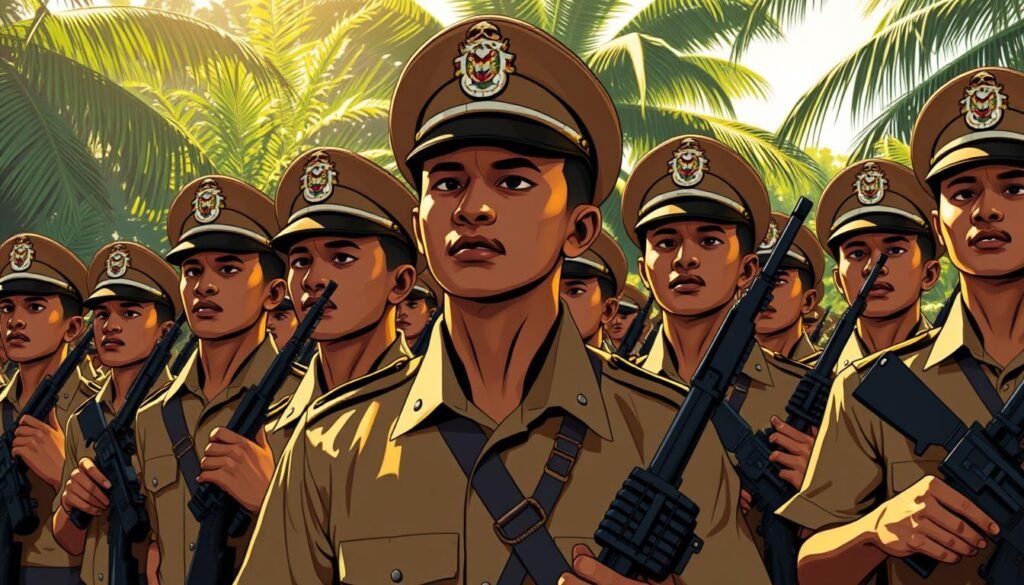
The Constabulary formed infantry regiments to support the war effort. These units were deployed to critical areas, including Bataan and Corregidor. Their mission was to defend vital public utilities and maintain security amidst the chaos of war.
Combat Operations and Infantries
During the war, the Constabulary participated in significant battles. One of the most notable was the defense of Bataan. Despite being outnumbered, the troops displayed remarkable resilience. Their efforts delayed the enemy’s advance, buying time for allied forces to regroup.
Another critical operation was the defense of Corregidor. This strategic location was vital for controlling Manila Bay. The Constabulary played a crucial role in holding the line, even as supplies dwindled and conditions worsened.
However, the war came at a great human cost. The infamous Bataan Death March claimed the lives of thousands, including many from the Constabulary. This tragic event remains a somber reminder of the sacrifices made during the conflict.
| Event | Role of the Constabulary | Impact |
|---|---|---|
| Induction into USAFFE | Integration with military forces | Enhanced national defense capabilities |
| Defense of Bataan | Delayed enemy advance | Bought time for allied forces |
| Defense of Corregidor | Held strategic location | Protected Manila Bay |
| Bataan Death March | Human losses | Highlighted the war’s toll |
The Philippine Constabulary’s contributions during World War II were instrumental in shaping the nation’s history. Their bravery and dedication remain a testament to their role in maintaining law and order, even in the face of overwhelming adversity.
Bureau of Constabulary and Its Impact
During the Japanese occupation of the Philippines, a new law enforcement body emerged, reshaping the nation’s security landscape. The Bureau of Constabulary was established under Japanese rule, replacing the pre-war Philippine Constabulary. This marked a significant shift in the country’s approach to maintaining law and order.
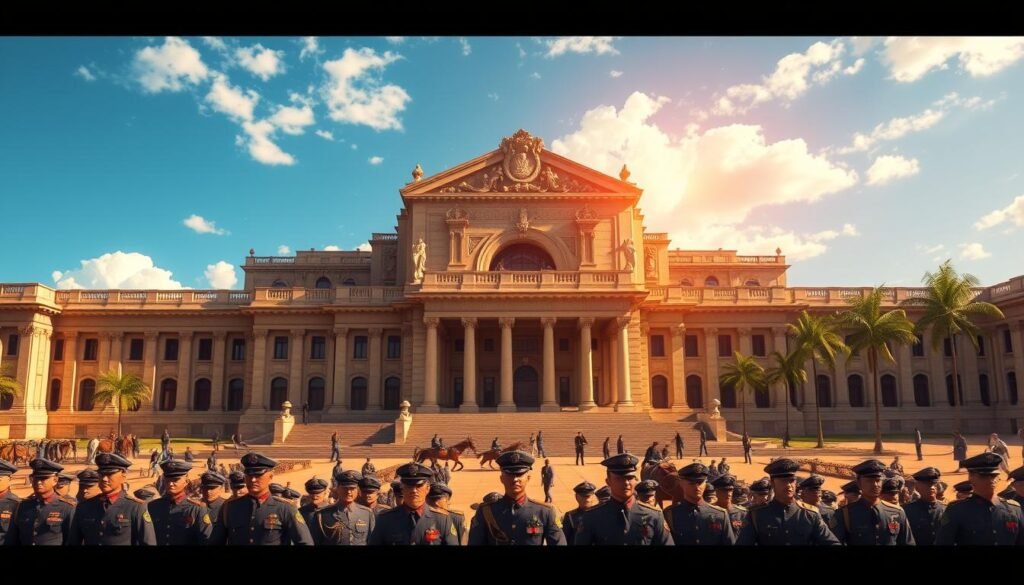
The Bureau was primarily used by the occupying forces to suppress resistance and maintain control over the population. Its role often conflicted with its pre-war mission of serving the people. This led to widespread mistrust and resentment among Filipinos, who viewed it as a tool of oppression rather than protection.
Key differences between the Bureau and the pre-war Constabulary included its structure and objectives. While the original institution focused on crime prevention and public safety, the Bureau prioritized enforcing Japanese policies and suppressing dissent. This shift had lasting effects on its reputation.
- Formed under Japanese occupation to enforce their policies.
- Used as a tool to suppress resistance and control the population.
- Contrasted sharply with the pre-war Constabulary’s mission.
- Left a controversial legacy that affected public trust.
After the war, the genuine Philippine Constabulary faced significant challenges in re-establishing its credibility. The Bureau’s actions during the occupation had tarnished its image, making it difficult to regain public confidence. This period highlighted the complexities of transitioning back to a trusted police force.
“The Bureau of Constabulary’s controversial role during the Japanese occupation left a lasting impact on the nation’s perception of law enforcement.”
Despite these challenges, the post-war Constabulary worked to rebuild its reputation. Efforts were made to align its mission with the needs of the people, emphasizing security and peace. This transitional phase was crucial in restoring trust and laying the groundwork for future reforms.
The Bureau’s legacy serves as a reminder of the importance of aligning law enforcement with the values of the community it serves. Its history underscores the need for transparency and accountability in maintaining public trust.
Post-War Developments and Modernization
After World War II, the Philippine Constabulary underwent significant changes to adapt to the nation’s new challenges. The war had left the country in a state of rebuilding, and the law enforcement system needed to evolve to address emerging threats.
In 1947, President Elpidio Quirino issued Executive Order No. 308, which marked a turning point in the organization’s history. This order merged the Constabulary with the Armed Forces of the Philippines (AFP), creating a unified approach to national security. The merger aimed to streamline resources and enhance operational efficiency.
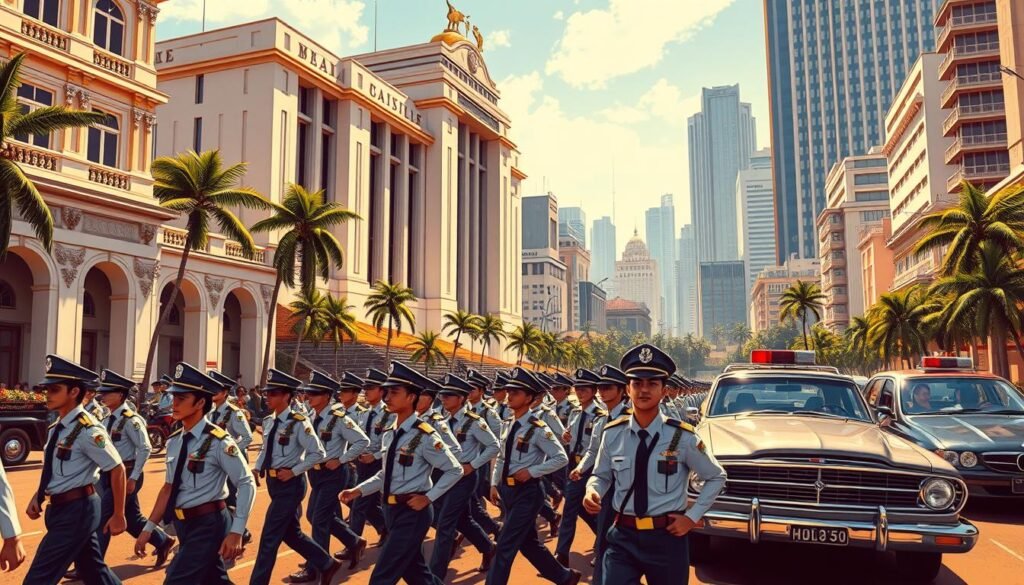
The post-war period saw a rise in insurgent activity, particularly from communist and separatist groups. This forced the Constabulary to rethink its operational tactics. Counterinsurgency became a primary focus, requiring advanced training and better equipment.
Modernization efforts were implemented to address these challenges. The government invested in upgrading infrastructure, including the construction of new training facilities. Enhanced training programs were introduced to prepare personnel for complex missions.
| Year | Initiative | Impact |
|---|---|---|
| 1947 | Merger with AFP | Unified approach to national security |
| 1950s | Counterinsurgency training | Improved operational tactics |
| 1960s | Infrastructure upgrades | Enhanced training facilities |
These changes redefined the Constabulary’s role in the country’s security framework. It transitioned from a traditional police force to a modernized institution capable of addressing both internal and external threats.
The long-term modernization journey highlighted the importance of adaptability in law enforcement. By integrating military and police functions, the Constabulary laid the groundwork for the future national police system. Its contributions during this period remain a cornerstone of the Philippines’ history.
Leadership and Influential Figures
Leadership has always been a cornerstone of effective law enforcement, shaping the trajectory of institutions like the Philippine Constabulary. From its early days to its modern evolution, the organization’s success was driven by visionary leaders who navigated challenges and steered its development.
Pioneers and Key Contributions
The Philippine Constabulary owes much of its foundation to pioneers like Brigadier General Rafael Crame. As the first Filipino chief, Crame brought a deep understanding of local needs and a commitment to peace and security. His leadership during the early 20th century set the tone for the organization’s future.
Another key figure was Captain Henry T. Allen, an American officer who played a pivotal role in shaping the Constabulary’s structure. His military background and strategic vision ensured the organization could handle both crime and insurgency effectively.
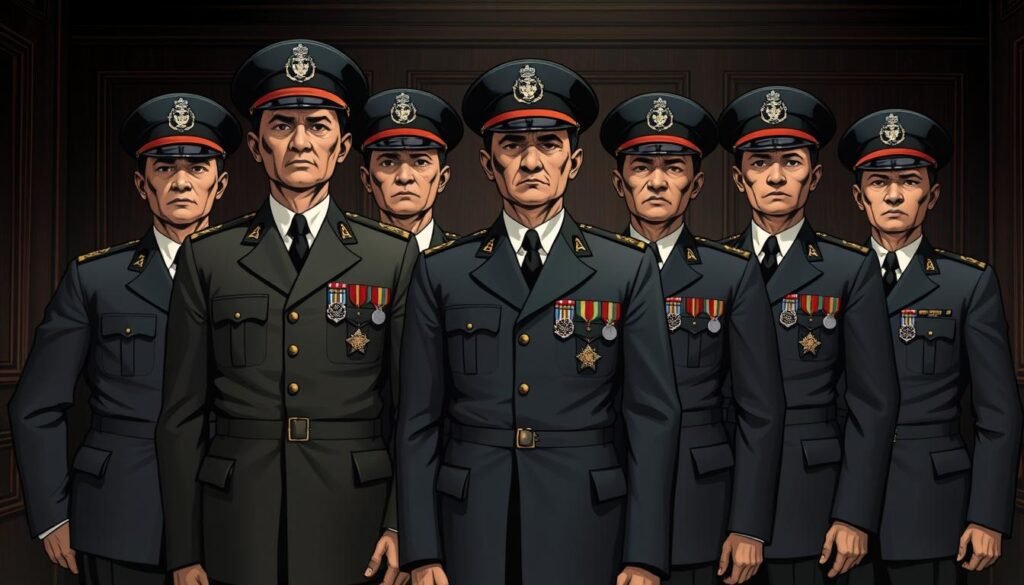
These leaders not only addressed immediate challenges but also laid the groundwork for a more robust institution. Their contributions during critical transitions, such as wartime and post-war periods, remain a testament to their foresight and dedication.
Profiles of Notable Officers
Over the decades, the Constabulary was shaped by officers who left an indelible mark on its history. Colonel Jose Velasquez, for instance, was instrumental in integrating Filipino personnel into the force. His efforts fostered trust and collaboration within the local population.
Another notable figure was General Manuel Yan, who led the organization during the post-war era. His focus on modernization and counterinsurgency strategies ensured the Constabulary remained relevant in a rapidly changing world.
“The legacy of these leaders continues to influence the national police system, highlighting the importance of visionary leadership in maintaining lawand order.”
| Leader | Role | Key Contributions |
|---|---|---|
| Brigadier General Rafael Crame | First Filipino Chief | Established local trust and operational efficiency |
| Captain Henry T. Allen | Founding Leader | Developed the Constabulary’s military-police structure |
| Colonel Jose Velasquez | Integration Officer | Promoted inclusion of Filipino personnel |
| General Manuel Yan | Post-War Leader | Modernized the force for counterinsurgency |
These leaders not only shaped the Constabulary’s operational strategies but also enhanced its credibility as a trusted police force. Their legacy continues to inspire the national police system, underscoring the importance of strong leadership in maintaining security and order.
For more insights on leadership development in law enforcement, refer to this comprehensive study.
Camp Crame: The Heart of the Constabulary
In 1935, Camp Crame became the cornerstone of the Philippine Constabulary’s operations, symbolizing its enduring legacy in law enforcement. Named after Brigadier General Rafael Crame, the first Filipino chief of the Constabulary, the camp has served as the organization’s headquarters for decades. Its establishment marked a pivotal moment in the history of the country’s security framework.
The location of Camp Crame was strategically chosen in Quezon City, a decision influenced by its proximity to key government and military facilities. The land was acquired through an exchange with the United States, highlighting the collaborative efforts between the two nations. This exchange not only provided the Constabulary with a central base but also reinforced its role as a critical institution in maintaining law and order.
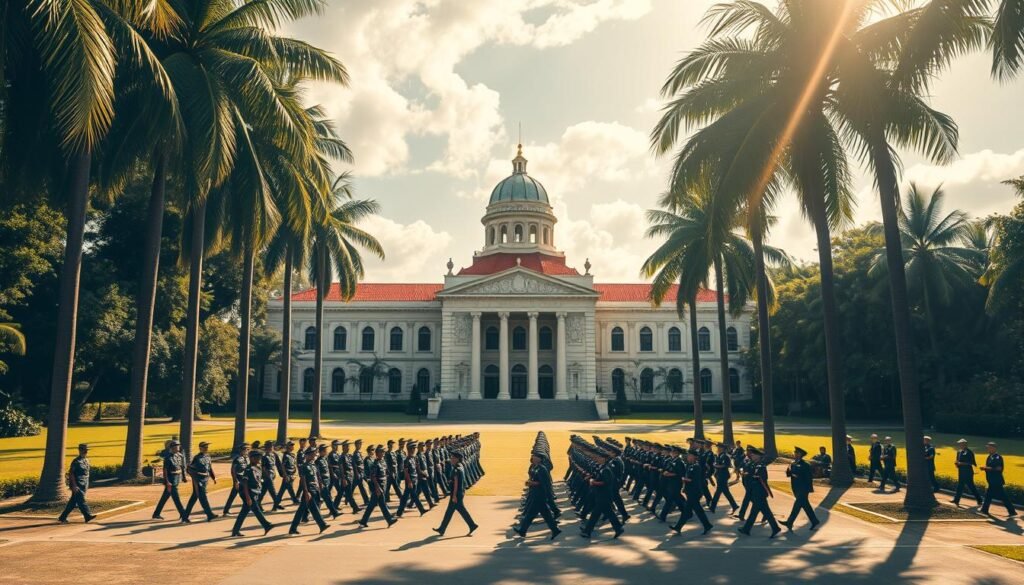
Brigadier General Rafael Crame’s leadership was instrumental in shaping the Constabulary’s identity. Naming the camp after him was a tribute to his contributions to the organization’s development. Under his guidance, the Constabulary evolved into a modern police force, capable of addressing both internal and external threats.
Over the years, Camp Crame has grown into a hub for training and administration. It houses state-of-the-art facilities, including training centers and intelligence units, which have played a crucial role in shaping the operational identity of the Constabulary. The camp’s evolution reflects the organization’s adaptability in responding to the changing needs of the nation.
“Camp Crame stands as a testament to the resilience and dedication of the Philippine Constabulary, embodying its commitment to peace and security.”
Despite its historical significance, Camp Crame faces challenges in the modern era. Plans for redevelopment have raised concerns about the potential loss of this important landmark. Efforts to protect its legacy, such as the installation of a historical marker by the National Historical Commission, highlight its role in the 1986 People Power Revolution. This event marked a turning point in the country’s history, further cementing Camp Crame’s place in the national consciousness.
For more insights on the ongoing efforts to preserve Camp Crame, refer to this detailed analysis.
Integration with National and Municipal Police Forces
The integration of municipal police services into a national framework marked a transformative era in Philippine law enforcement. During the Marcos era, the Philippine Constabulary became the nucleus of the Integrated National Police, merging local police units into a cohesive national system.
This process involved significant administrative and operational changes. Local police forces, fire departments, and jails were unified under the command of the Constabulary. The goal was to streamline resources and enhance security across the country.
The integration brought both advantages and challenges. On one hand, it improved coordination and resource allocation, leading to more efficient law enforcement. On the other hand, merging diverse units required careful management to address differing protocols and cultures.
One of the key benefits was the standardization of training and procedures. This ensured that all personnel operated under a unified framework, enhancing overall public safety. However, the transition also highlighted issues like resource disparities and resistance to change.
“The integration of municipal and national police forces was a critical step in modernizing Philippine law enforcement, paving the way for future reforms.”
This integration also set the stage for the eventual transition to a fully civilian national police force. By centralizing control and standardizing operations, the groundwork was laid for the creation of the Philippine National Police in 1991.
For more details on this transformation, visit the Integrated National Police page.
The legacy of this integration continues to influence the country’s approach to security and law enforcement. It remains a testament to the importance of adaptability in maintaining peace and order.
Constabulary in the Marcos Martial Law Era
The Marcos regime marked a dark chapter in Philippine history, with the Constabulary playing a central role in enforcing martial law. Declared in September 1972, martial law was justified by rising disorder and threats from insurgent groups. The Constabulary became a key instrument in suppressing dissent and maintaining control.
Under President Ferdinand Marcos, the organization was tasked with enforcing strict measures to ensure security. This included widespread arrests, detentions, and the suppression of political opposition. The government leveraged the Constabulary to consolidate power, often at the expense of civil liberties.
One of the most controversial aspects of this era was the documented human rights abuses. Amnesty International reported tens of thousands of arbitrary arrests, torture, and extrajudicial killings. The Constabulary’s actions were often driven by political objectives, leading to widespread fear and mistrust among the population.
Examples of its involvement include the arrest of over 50,000 individuals from 1972 to 1975. Many were detained without trial, and reports of torture were common. The organization’s role in enforcing martial law left a lasting scar on the nation’s collective memory.
“The Constabulary’s actions during martial law were a stark reminder of the dangers of unchecked power and the importance of protecting human rights.”
The long-term consequences of this period were profound. The lack of accountability and transparency fueled calls for reform. Survivors and activists continue to seek justice, emphasizing the need to remember these atrocities to prevent their recurrence.
For more insights on this era, visit this detailed analysis.
Shifts in management and oversight during this period highlighted the need for a more accountable police force. These changes eventually paved the way for the establishment of the Philippine National Police, marking a new chapter in the country’s law enforcement history.
- Enforced martial law measures, including arrests and detentions.
- Documented human rights abuses, such as torture and killings.
- Political objectives influenced operations, leading to widespread fear.
- Long-term consequences fueled calls for reform and accountability.
The Marcos era remains a cautionary tale about the dangers of authoritarian rule. The Constabulary’s role during this time underscores the importance of safeguarding democratic principles and human rights in law enforcement.
Civilianization and the Formation of the Philippine National Police
The shift from military to civilian control marked a transformative era in Philippine law enforcement. After the fall of the Marcos regime, the Philippine Constabulary underwent significant reforms to align with democratic principles. This transition aimed to restore public trust and modernize the country’s police system.
Transition from Military to Civilian Control
The civilianization process began with the dissolution of the Constabulary as a military force. In 1991, it merged with the Integrated National Police to form the Philippine National Police (PNP). This new entity was placed under the Department of the Interior and Local Government, emphasizing its civilian nature.
Key legislation, such as Republic Act No. 8551, played a crucial role in this transition. It mandated the PNP to be a community-oriented agency focused on maintaining peace and public safety. The reforms also introduced stricter qualifications for police personnel, ensuring professionalism and accountability.
The integration of military and municipal functions into the PNP streamlined operations. It allowed for better resource allocation and improved coordination across regions. This shift was essential in addressing the challenges of a rapidly changing society.
“The civilianization of the Philippine police force was a critical step in ensuring accountability and aligning with democratic values.”
Impact on Organizational Structure and Public Trust
The reorganization had a profound impact on the national police system. It introduced a more transparent and efficient structure, enhancing public trust. The PNP’s focus on community engagement and service-oriented operations further solidified its role as a trusted institution.
Modern policing strategies were also reshaped by this transition. The PNP adopted advanced training programs and technology to address emerging threats. This approach ensured that the police force remained effective in maintaining law and order.
| Year | Reform | Impact |
|---|---|---|
| 1991 | Formation of the PNP | Transition to civilian control |
| 1998 | Republic Act No. 8551 | Professionalization of the police force |
| 2010 | Modernization Programs | Enhanced operational efficiency |
For a deeper understanding of the transition from military to civilian control, refer to this comprehensive study.
The civilianization of the Philippine Constabulary remains a cornerstone of the country’s history. It highlights the importance of adaptability and accountability in maintaining security and peace.
Core Missions and Duties of the Constabulary
From its inception, the Philippine Constabulary was tasked with a wide range of responsibilities to ensure national stability. Its primary mission was to preserve peace and enforce the law across the country. This dual role made it a cornerstone of the nation’s security framework.
One of its key duties was maintaining public order. The Constabulary operated in both urban and rural areas, ensuring that crime was kept in check. Its presence was particularly vital in provinces where local police forces were underdeveloped or overwhelmed.
Beyond law enforcement, the organization played a significant role in home defense. During times of conflict, it worked alongside the military to protect the population. This collaboration showcased its versatility and commitment to national safety.
The Constabulary also took on civic duties, such as disaster response and community outreach. These efforts helped build trust between the government and the people. Its involvement in such activities highlighted its multifaceted operational mandate.
- Preserved peace and enforced law across the country.
- Maintained public order in both urban and rural areas.
- Collaborated with the military for home defense.
- Engaged in civic duties like disaster response and community outreach.
Its impact on local policing was profound. By training and inspecting municipal police forces, the Constabulary raised the standard of law enforcement nationwide. This approach ensured a unified and effective national police system.
“The Philippine Constabulary’s multifaceted role was instrumental in shaping the country’s approach to security and peace.”
Overall, the organization’s contributions extended beyond its immediate duties. It laid the foundation for modern law enforcement in the Philippines, leaving a lasting legacy in the nation’s history.
Comparative Analysis: Global Policing Systems and the Constabulary
Policing systems worldwide have evolved differently, reflecting unique historical and cultural contexts. The Philippine Constabulary, established in 1901, shares similarities with other global models but also stands out in its structure and mission. By comparing it with systems like the French police, we can better understand its place in international law enforcement history.
The French police system, for example, operates under a centralized structure, much like the Constabulary during its early years. Both systems were designed to maintain security and enforce law across their respective nations. However, the French model emphasizes a clear separation between military and civilian roles, a distinction that evolved later in the Philippines.
Another notable comparison is with the United States policing system, which is highly decentralized. Unlike the Constabulary, which was initially a military-police hybrid, U.S. police forces operate independently at local, state, and federal levels. This difference highlights how historical legacies shape modern police practices.
In terms of operational methods, the Constabulary’s focus on counterinsurgency and public order mirrors strategies used in post-colonial nations like India and South Africa. These countries also transitioned from colonial-era systems to modern national police forces, emphasizing community engagement and peacekeeping.
“The evolution of policing systems globally underscores the importance of adapting to local needs while learning from international best practices.”
Lessons from global reforms, such as the French emphasis on civilian oversight and the U.S. focus on local autonomy, could inform future improvements in the Philippines. By studying these models, the government can address challenges like crime prevention and public trust more effectively.
Overall, the Philippine Constabulary’s legacy offers valuable insights into the development of law enforcement systems. Its unique blend of military and police functions, combined with lessons from global practices, continues to shape the country’s approach to security and order.
Conclusion
The Philippine Constabulary’s journey reflects a profound evolution in the nation’s approach to law and order. From its formation in 1901 to its transformation into the national police, it has shaped the country’s security framework. Its ability to adapt to changing times highlights its enduring legacy.
Historical events, such as World War II and the Marcos era, tested its resilience. These challenges not only shaped its operations but also influenced modern policing in the Philippines. The lessons learned from its history remain relevant today.
Effective law enforcement continues to be a cornerstone of national stability. The Constabulary’s legacy reminds us of the importance of adaptability and accountability in maintaining peace. Its contributions laid the foundation for the current police system.
Encouraging further study of its history can provide valuable insights for future reforms. The Philippine Constabulary’s story is a testament to the nation’s commitment to security and order.
FAQ
What was the primary role of the Philippine Constabulary?
The Philippine Constabulary was established to maintain peace and order, enforce laws, and ensure public safety across the country.
When was the Philippine Constabulary created?
It was formed in 1901 during the American occupation of the Philippines to serve as a national police force.
How did the Constabulary evolve during World War II?
During the war, the Constabulary played a crucial role in combat operations, supporting the Philippine Army and resisting Japanese forces.
What was the significance of Camp Crame?
Camp Crame served as the headquarters of the Philippine Constabulary and later became the central hub for the Philippine National Police.
How did the Constabulary transition into the Philippine National Police?
The transition occurred in 1991 when the Constabulary was civilianized and merged with municipal police forces to form the Philippine National Police.
What were the key contributions of the Constabulary during the Marcos Martial Law era?
The Constabulary enforced martial law, maintained internal security, and supported the government’s policies during this period.
How does the Philippine Constabulary compare to global policing systems?
The Constabulary’s structure and missions were unique, blending military and civilian roles, which differs from many traditional policing systems worldwide.
Who were some notable leaders of the Philippine Constabulary?
Influential figures included General Rafael Crame, the first Filipino chief, and other officers who shaped its development and operations.
What was the impact of the Bureau of Constabulary?
The Bureau streamlined the Constabulary’s operations, enhancing its efficiency and effectiveness in maintaining national security.
How did the National Defense Act affect the Constabulary?
The Act reorganized the Constabulary into a military organization, integrating it with the Philippine Army to strengthen national defense.
Source Links
- Philippine Constabulary
- Philippine Police Systems
- Brief History
- Philippine Constabulary
- PNP Organization
- Police | Definition, History, Organizations, & Facts | Britannica
- Our History
- Philippine National Police
- The Philippine Constabulary: An Example of American Command of Indigenous Forces
- Police – Law Enforcement, Reforms, History | Britannica
- Microsoft Word – _fjhp_2010.doc
- Royal Irish Constabulary, 1836-1922 – The National Archives
- South Carolina State Constabulary – South Carolina Encyclopedia
- Is Reorganization of the Army Under the Unit-of-Action and the Unit-of-Employment Concept Consistent with the Army’s Identity?
- Project MUSE – Creating the Modern Army
- The United States Zone Constabulary: An Analysis of Manning Issues and Their Impact on Operations
- Philippine Scouts and Constabulary | Encyclopedia.com
- The Philippine Constabulary
- LOOK BACK: The Philippine Constabulary under Marcos
- REPUBLIC ACT No. 6975 – AN ACT ESTABLISHING THE PHILIPPINE NATIONAL POLICE UNDER A REORGANIZED DEPARTMENT OF THE INTERIOR AND LOCAL GOVERNMENT, AND FOR OTHER PURPOSES
- Comp
- Urban planning – Postwar, Design, Infrastructure | Britannica
- Developing leadership strategies in UK police forces
- Police Leadership Theories, Functions, Skills & Effectiveness
- PNP launches Malasakit Center for cops, dependents
- [Rappler’s Best] All that drama at Camp Crame
- Quarantine, isolation facilities inside Crame now 100 percent-occupied
- P.D. No. 765
- PRESIDENTIAL DECREE NO. 765 – PROVIDING FOR THE CONSTITUTION OF THE INTEGRATED NATIONAL POLICE AND FOR OTHER PURPOSES.
- Law Summary: Providing For The Constitution Of The Integrated National Police And For Other Purposes – Presidential Decree No. 765
- Philippines – Martial Law, Marcos, Dictatorship | Britannica
- Five things to know about Martial Law in the Philippines
- Martial Law, the dark chapter in Philippine history
- Republic Act No. 8551
- Security sector governance and reform in the Philippines
- The Mission of UN Police
- Convergence of Police History from a Comparative Analysis among Different Countries: Lessons for Bangladesh
- Comparing Police Systems Across the World
- What Are Police Like in Other Countries?
- Conclusion | HM Inspectorate of Constabulary in Scotland
- Conclusion – Violence and Colonial Order

